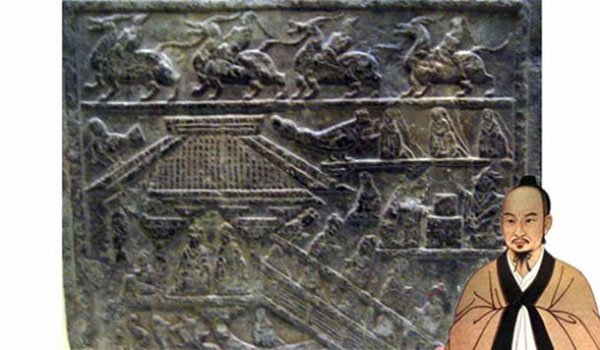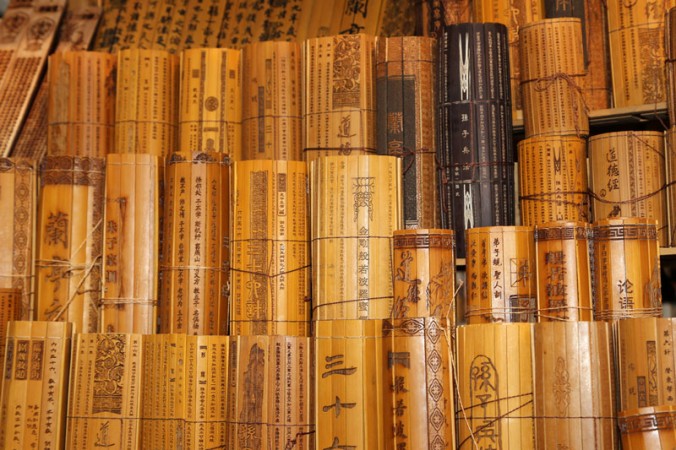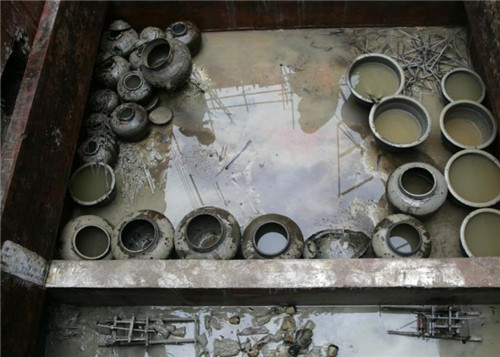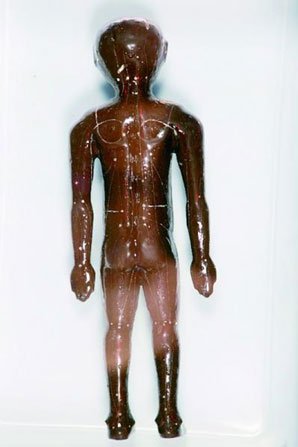|
China |
| Ancient Bamboo Medical Books Uncovered in China Belonged to Legendary Bian Que  By April Holloway, Ancient Origins | May 19, 2014 Last year, archaeologists unearthed 920
bamboo strips at a construction site in the south-western city of
Chengdu in China, containing recipes for treating ailments that date
back 2,000 years. The bamboo strips, which were once widely used as a
writing material, were reportedly found along with other relics of the
Western Han Dynasty, which came to power in 260 BC. Archaeologists
speculated that the traditional Chinese remedies may have been written
by the successors of Bian Que, reported to be China’s earliest known
physician. Now further testing has confirmed that the texts were written
by Bian Que himself, according to a news report in ecns.cn. Translation
work has also revealed the remarkable contents of these ancient medical
manuscripts.
Experts say the works are based mainly on studies of determining disease by taking the patient’s pulse. Other practices mentioned include internal medicine, surgery, gynaecology, dermatology, ophthalmology as well as traumatology. In addition, 184 tiles are related to the medical treatment of horses, considered by the experts as one of the most important veterinarian works in ancient China. The bamboo strips were found, along with many other precious relics, within four Western Han Dynasty (206 BC – 24 AD) tombs located in the town of Tianhui. Among the finds were four models of looms, nine medical books, 50 inscribed wooden tablets, 240 lacquer wares, jewellery, and tomb figures. Out of the nine medical books, some have been verified to be the long lost medical treatises written by the physician Bian Que. In addition, archaeologists also uncovered a 14-centimeter long figurine with major acupoints marked out. It is believed to be a key to deciphering the origin of acupuncture treatment.  According to Chinese legend recorded in the Records of the Grand Historian, Bian Que was gifted with remarkable abilities from a deity. The story states that he was given a packet of medicine which gave him the ability to see through the human body. He thereby became an excellent diagnostician with his x-ray like ability. It is said that he pioneered pulse-taking, used anaesthesia and even performed an organ transplant. Whether there is factual basis to the legends or not, Bian Que is known to have been a remarkable physician who was centuries ahead of his time. The discovery of his ancient remedies is an incredibly rare and important find. By April Holloway Republished with permission from Ancient Origins. Read the original here |
|
Ancient bamboo medical books unearthed
2014-05-12 13:11CNTVWeb Editor: Li Yan The 920 bamboo tiles unearthed from
Chengdu's Laoguan Mountain last year have been proven to be medical
books written by the Bian Que school. The content of the bamboo pieces
comes from nine lost medical books. Experts say they are works of the
Bian Que school, based mainly on studies of determining disease by
taking the patient's pulse.
 The 920 bamboo tiles unearthed from Chengdu's Laoguan Mountain last year have been proven to be medical books written by the Bian Que school. Credit: ecns.cn Other practices mentioned include internal medicine, surgery, gynecology, dermatology, ophthalmology as well as traumatology. Bian Que was a legendary doctor who lived over 2,000 years ago, and is considered the father of the pulse taking technique in Chinese medicine. In addition, 184 tiles are related to the medical treatment of horses, considered by the experts as one of the most important veterinarian works in ancient China. What's more, a 14-centimeter long figurine has also been unearthed with the nine medical books. With major acupoints marked out, it is believed to be a key to deciphering the origin of acupuncture treatment. Credit: ecns.cn |
| Chinese bamboo texts tell medical history 2013-12-19 09:34XinhuaWeb Editor: Mo Hong'e
Chillies for a headache and a bull's urine for jaundice: These are the latest deciphered messages of how Chinese people two millennia ago cured themselves, and their horses. The 920 medical bamboo slips, together with other historical relics of the Western Han Dynasty (202 BC- 9 AD), were found in a subway construction site in Chengdu, capital city of southwest China's Sichuan Province. A total of 184 bamboo slips are said to be the "guidebook" for horse vets. The remaining 736 can be categorized into nine separate medical texts covering various domains. According to Xie Tao, a research fellow with Chengdu's archaeology institute, the books could be lost medical classics written by the successors of Bian Que, a medical pioneer from the 5th century B.C. Two characters in one of the books have the same pronunciation as Bian Que, though in different written forms, said Wu Jiabi, of a bamboo script research institute in neighboring Hubei Province. Bian Que was said to have invented the technique of taking the pulse and narcosis. He perhaps performed the world's earliest organ transplant, as recorded in Lie Zi, an important classic of Taoism. The bamboo slips did not contain any sorcery, believed to indicate the separation of medicine and witchcraft and the budding of medical science. Credit: ecns.cn |
Ancient Chinese bamboo texts tell medical history Ancient texts written on bamboo slips [Credit: Kenyon College] The 920 medical bamboo slips,
together with other historical relics of the Western Han Dynasty (202
BC- 9 AD), were found in a subway construction site in Chengdu, capital
city of southwest China's Sichuan Province. A total of 184 bamboo slips
are said to be the "guidebook" for horse vets. The remaining 736 can be
categorized into nine separate medical texts covering various domains.
According to Xie Tao, a research fellow with Chengdu's archaeology
institute, the books could be lost medical classics written by the
successors of Bian Que, a medical pioneer from the 5th century B.C. Two
characters in one of the books have the same pronunciation as Bian Que,
though in different written forms, said Wu Jiabi, of a bamboo script
research institute in neighboring Hubei Province. Bian Que was said to
have invented the technique of taking the pulse and narcosis. He perhaps
performed the world's earliest organ transplant, as recorded in Lie Zi,
an important classic of Taoism. The bamboo slips did not contain any
sorcery, believed to indicate the separation of medicine and witchcraft
and the budding of medical science. Source: Xinhuanet [December 18,
2013]
Credit: The Archaeology News Network
 |
| FAIR USE NOTICE: This page contains copyrighted material the use of which has not been specifically authorized by the copyright owner. Pegasus Research Consortium distributes this material without profit to those who have expressed a prior interest in receiving the included information for research and educational purposes. We believe this constitutes a fair use of any such copyrighted material as provided for in 17 U.S.C § 107. If you wish to use copyrighted material from this site for purposes of your own that go beyond fair use, you must obtain permission from the copyright owner. |
|
|

